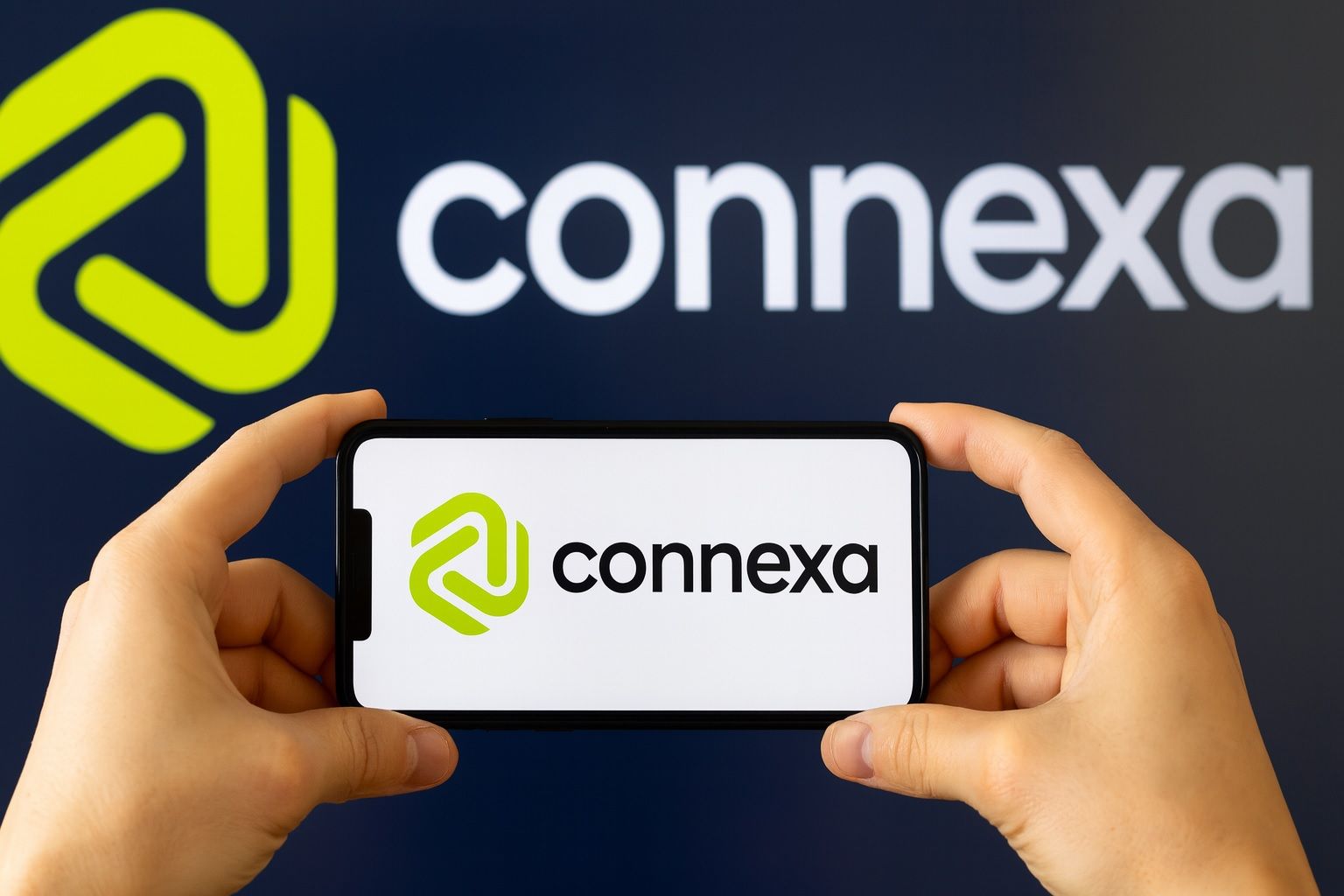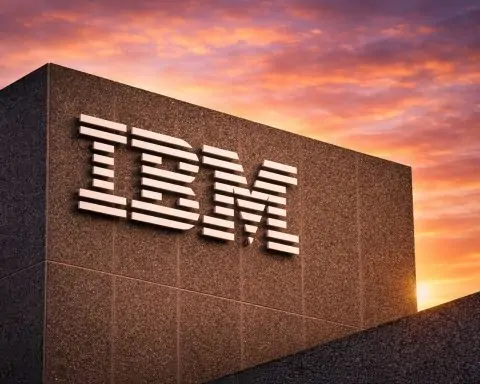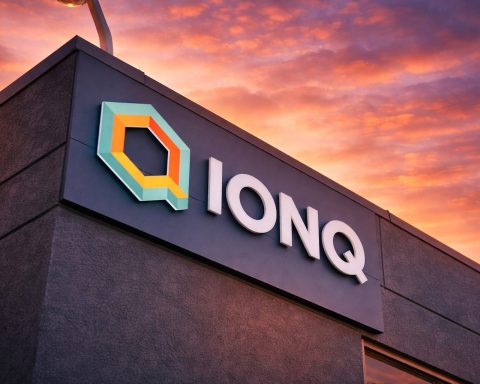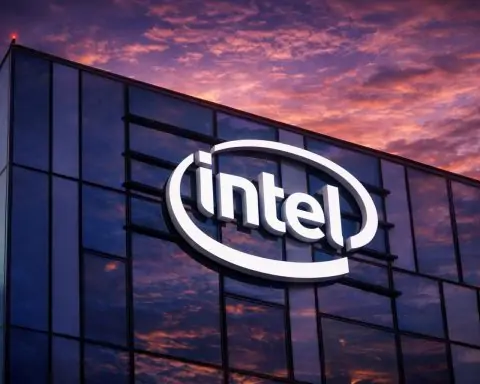- Tiny AI Stock Plummets: YYAI (AiRWA Inc.) has lost over 90% of its value in 2025 – trading around $4 per share post-split (≈$0.08 pre-split) as of Oct. 27 [1] [2]. The market cap is only a few million dollars at these levels [3], reflecting a near-99% collapse from the stock’s early-2025 highs [4].
- Last-Ditch Reverse Split: To avoid Nasdaq delisting, YYAI enacted a 1-for-50 reverse stock split effective Oct. 27, boosting the share price above $1 by consolidating shares [5] [6]. Outstanding shares shrank from ~949 million to ~19 million [7]. Management hopes the move meets Nasdaq’s $1 minimum bid rule and attracts institutional investors [8].
- Crypto Pivot & Funding: Earlier this month, Connexa Sports Technologies rebranded as AiRWA Inc. (ticker YYAI) and unveiled a pivot from sports-tech to blockchain finance. On Oct. 6, the company announced a $100 million joint venture with Singapore’s JuCoin Capital – including about $30 million in Solana tokens – to launch the “AiRWA Exchange” for tokenized asset trading [9] [10]. This Web3 move marked a radical shift from YYAI’s legacy business of AI sports analytics and training gadgets.
- Extreme Volatility & Insider Buying: YYAI’s stock went on a wild trading ride after the pivot news. It plunged ~93% in a single day (Oct. 7) to about $0.18 [11], then rebounded 32% the next session amid frenetic penny-stock speculation [12]. Intraday swings exceeded 1,000% on some days [13]. Sensing opportunity, a major insider bought 3.21 million shares (~$1.03 M worth) on Oct. 8–10 at fire-sale prices [14] [15] – lifting his stake above 22% of the company [16]. This insider buying sparked brief “FOMO” enthusiasm among retail traders, though the stock continued sliding to new lows [17] [18].
- Analyst Warnings & Sentiment: No Wall Street firms officially cover YYAI [19], but independent analyses urge extreme caution. StockInvest.us rates YYAI a “Strong Sell”, bluntly calling it “a highly speculative penny stock” likely to stay volatile [20]. TipRanks’ AI-based models likewise label it “Underperform”, noting weak financials and major challenges ahead [21]. Retail sentiment is mixed – online forums show surging chatter around YYAI, with some traders cheerleading for a short-squeeze after the split [22]. However, many investors remain skeptical, seeing the crypto pivot as a desperate gimmick and fearing further declines in this troubled micro-cap [23] [24].
YYAI’s Transformation: From Tennis Tech to Tokenized Finance
YYAI’s recent saga is a dramatic pivot from its roots. Until this month, the Nasdaq-listed company was known as Connexa Sports Technologies, a small-cap firm specializing in sports training tech (like the Slinger Bag portable ball launcher and AI coaching analytics) [25]. Facing stagnation and financial strain, Connexa’s management made a bold leap into the hottest buzzwords of 2025 – crypto and AI. On Oct. 6, 2025, they announced the company would rebrand as “AiRWA Inc.” and refocus entirely on blockchain-based financial services [26] [27].
The crown jewel of this plan is the proposed AiRWA Exchange, a platform to tokenize real-world assets (RWA) – essentially converting traditional investments (stocks, real estate, etc.) into crypto tokens tradeable 24/7. To fund this venture, YYAI (as Connexa) struck a deal with JuCoin Capital, a Singaporean crypto firm, forming a $500 million joint venture (51% owned by YYAI) [28]. JuCoin committed $100 million upfront, including roughly 150,000 Solana (SOL) tokens (~$30 M) to bootstrap the exchange’s liquidity [29] [30]. Company officials hailed the move as ushering in “a new era of blockchain-based financial services,” positioning AiRWA at the intersection of fintech and AI [31] [32].
Initial market reaction to this pivot was volatile, to put it mildly. Ordinarily, a tiny company announcing a huge crypto tie-up might spark a speculative rally – and indeed, YYAI’s stock spiked briefly on the news. But the excitement quickly flipped to panic. Traders grew wary that a struggling sports-tech firm was suddenly chasing a crypto hype cycle. With little trading liquidity and millions of shares looking for an exit, YYAI’s price collapsed. On Oct. 7, the day after the rebrand news, YYAI shares imploded from the ~$2 range to just $0.18 by the close, a 92.8% single-day crash [33]. In other words, an announcement of positive news somehow erased nearly 93% of the company’s market value in 24 hours. This astonishing plunge reflected a rush for the exits by shareholders and perhaps confusion over the stock’s true value post-pivot. (Notably, YYAI had been hovering around $1–2 in the weeks prior [34], so the magnitude of the drop suggests extreme volatility exacerbated by its tiny float and likely algorithmic trading triggers.)
By Oct. 8, however, bargain-hunting speculators swooped in. YYAI bounced about 32% in a single session (from ~$0.18 to ~$0.24) amid frenzied bottom-fishing [35]. Intraday swings were jaw-dropping – one analysis noted the stock moved within a 1,460% range in one day (trading as high as ~$2.74 and as low as $0.18) [36]. Such 1000%+ intraday volatility is virtually unheard of outside of penny-stock land or crypto tokens. It underscores how unhinged trading became, with YYAI behaving more like a meme stock or crypto coin than a conventional equity.
Reverse Split to Salvage Nasdaq Listing
As YYAI’s share price plunged into mere pennies, the company faced an existential threat: Nasdaq’s $1 minimum bid price rule. Nasdaq-listed stocks that trade below $1 for an extended period risk being delisted to the OTC markets. To avert this fate, AiRWA’s board approved a drastic measure – a 1-for-50 reverse stock split. The split, announced Oct. 23 and executed at market open on Oct. 27, consolidates every 50 shares into 1 share [37] [38]. This accounting action multiplies the per-share price by 50-fold (while proportionally reducing total shares outstanding) without changing the company’s market capitalization or fundamentals.
YYAI’s management acknowledged two goals for the reverse split: (1) to regain compliance with Nasdaq’s >=$1 share price rule, and (2) to “improve the stock’s attractiveness to institutional investors.” [39] Many big funds are prohibited from buying very low-priced stocks, so lifting YYAI out of penny-stock territory could marginally broaden its investor pool. According to the company’s statement, the split shrank the number of outstanding common shares from ~949 million to ~18.98 million [40]. No fractional shares were issued (any leftover fractions were rounded up to whole shares) [41]. YYAI continues to trade under the same ticker, but with a new CUSIP identification number to mark the post-split shares [42].
For existing shareholders, the reverse split is largely cosmetic – if you owned 50,000 shares at $0.08 each (worth $4,000 total) on Friday, you now hold 1,000 shares at $4.00 each, still worth $4,000 total (barring any market moves). Indeed, on Oct. 27, YYAI opened around $4.00 post-split [43], roughly equivalent to its prior closing level of $0.08. The stock oscillated between about $3.85 and $5.00 in early trading [44], indicating that the market’s valuation of the company didn’t materially change; only the share count did. Reverse splits often carry a stigma – they’re a telltale sign of a distressed stock – and can sometimes trigger renewed selling pressure. In YYAI’s case, the stock had already been hammered so badly that the split simply resets the price to a more “normal” looking number. Crucially, however, YYAI’s fundamentals remain the same, and its history of volatility and value destruction is not erased by this accounting maneuver.
Notably, YYAI isn’t alone in resorting to such tactics. Reverse splits have become common among beaten-down tech and biotech microcaps aiming to retain listings. They often signal that a company is in survival mode, scrambling to buy time for a turnaround. In YYAI’s situation, the hope is that by maintaining a Nasdaq listing, the company can access broader capital markets and uphold credibility as it pursues its new blockchain exchange venture. Without the split, YYAI was in danger of delisting (which generally makes a stock even more illiquid and speculative). With the split done, the immediate compliance issue is solved, but it’s only a first step. The company now needs to deliver tangible business progress to justify its existence on a major exchange.
Financial Health: Tiny Company with Big Ambitions (and Risks)
Behind the flashy crypto pivot, YYAI’s financials reveal a fragile microcap with slim resources. In its last reported fiscal year (year ended April 30, 2025), the company did have some real business: it recorded $12.8 million in revenue (up 147% from prior year) and a modest $3.5 million net profit [45]. However, nearly all that profit was tied up in accounts receivable ($15.4 M) owed by licensee partners, and YYAI’s actual cash on hand was only ~$50,000 [46]. Such scant cash reserves led auditors to warn of “substantial doubt” about the company’s ability to continue as a going concern [47]. In short, even before the crypto venture, YYAI was undercapitalized and in need of fresh funding.
The JuCoin partnership ostensibly brings in $100 million of resources, but it’s important to clarify: this is not a $100 million cash gift to YYAI’s balance sheet. It’s a joint venture commitment – JuCoin and YYAI each agree to contribute up to $250 M in assets (cash or crypto) to develop the AiRWA Exchange [48]. JuCoin’s initial contribution is $30 M worth of SOL tokens and presumably other support [49]. YYAI’s contributions may include intellectual property, tech infrastructure, or equity stakes. The exact terms are complex, but what matters for investors is that YYAI itself isn’t suddenly flush with cash. Any revenue from the future exchange is speculative, and building a regulated trading platform is expensive. Execution risk is extremely high – YYAI must actually build the exchange, integrate Solana blockchain technology, attract users (JuCoin claims 4 million users ready to onboard [50]), and navigate financial regulations for tokenized securities. Each of these steps is a heavy lift for a company of YYAI’s minuscule size.
Unsurprisingly, with cash so tight, YYAI may have to raise capital or take on debt if its crypto venture doesn’t generate revenue quickly. That could mean further dilution for existing shareholders (issuing more shares down the line, undoing some of the reverse split’s effect) or increasing leverage. This financial precariousness is a key reason analysts urge caution. As one market strategist noted, even after the headline “$100M infusion,” YYAI’s “cash runway is thin” and any delays in launching the exchange could force additional fundraising, diluting current owners [51]. For investors, it’s a classic high-risk/high-reward scenario: the company’s ambitious pivot could create a valuable new platform, or it could fizzle out and leave the stock essentially worthless. Right now, the stock’s ultra-low valuation (just a few million dollars market cap) suggests Wall Street is pricing in a high probability of failure.
Insider Bets and Retail Trader Buzz
One bright spot for embattled YYAI shareholders: insiders are literally buying what they’re selling. In early October, as the stock cratered, director Michael Anthony Belfiore aggressively accumulated shares on the open market. A Form 4 SEC filing showed Belfiore bought ~3.21 million shares on Oct. 8 and 10 at an average cost of around $0.25 per share [52] [53]. He spent over $1.02 million on these purchases, a significant outlay given YYAI’s tiny size. After these buys, an amended 13D disclosure revealed Belfiore controls 22.1% of YYAI’s outstanding shares [54] – a substantial vote of confidence from someone with insider knowledge.
Such insider buying is often interpreted as a positive signal; company executives or directors generally don’t put more of their own money at risk unless they see value. Belfiore’s move suggested he believes YYAI shares were deeply undervalued below 30 cents. As one commentator put it, leadership may feel the stock price at penny levels “does not reflect the company’s true prospects” after the crypto pivot [55]. However, seasoned investors caution that insider purchases are no guarantee of a turnaround [56]. Insiders, too, can misjudge or be unable to prevent a company’s decline, especially in a speculative venture. Still, in the near term, Belfiore’s buying did spark a wave of retail trader enthusiasm – essentially a “fear of missing out” (FOMO) rally among some penny-stock players.
On platforms like StockTwits and Reddit, YYAI became a hot ticker in mid-October. Social media mentions of $YYAI skyrocketed, and for a brief period many retail traders turned bullish on the name [57]. StockTwits data noted message volume around YYAI spiked thousands of percent and sentiment flipped to “extremely bullish” as traders chattered about catching the bottom [58]. Some users openly predicted a big squeeze, speculating that if YYAI could climb back to even $0.50, it would trigger widespread FOMO buying and possibly run toward $1 [59]. Others pointed to the relatively high short interest (around 5–6% of the float shorted [60]) and argued that the reverse split could set the stage for a short squeeze, where short-sellers rush to cover positions on any upward price spike [61]. This kind of optimistic chatter is typical in penny-stock communities, especially after seeing an insider bet big.
However, so far those bullish dreams have not materialized. Despite the insider buys and online hype, YYAI kept sliding to new lows through late October – hitting roughly $0.077 (pre-split) at one point [62]. The post-split price of ~$4 is merely an arithmetical change, not a true recovery. And sentiment on forums is now divided: plenty of traders label YYAI a “pump-and-dump” cautionary tale, noting its history of value destruction (indeed, the stock was once worth the equivalent of hundreds of dollars per share a few years ago [63] after adjusting for multiple reverse splits). The bearish camp on social media argues that management’s pivot is more of a buzzword rebrand than a viable business plan, and they suspect the wild price swings are driven by day-traders and momentum algos rather than any fundamental change. “This is not Nvidia,” one user quipped, highlighting that YYAI’s tiny revenues and blockchain gambit don’t compare to legitimate AI leaders.
Meanwhile, the bullish camp of retail traders remains small but vocal, insisting that with the float drastically reduced and insiders aligned, any good news could ignite an outsized rally. If the company announces progress – say a regulatory approval, a beta launch of AiRWA Exchange, or additional funding – it could validate some of the insider optimism. These traders are essentially betting on a lottery ticket: that YYAI has been beaten down so far that even a hint of success will lead to explosive upside. It’s a high-risk bet, and only time will tell if it pays off or if the pessimists are proven right.
Analysts: “High Risk, Speculative Penny Stock”
Professional analysts, for the most part, are not weighing in on YYAI – likely due to its microcap status and lack of coverage [64]. The company is off the radar of big Wall Street research desks. However, several independent market analysis platforms have sounded clear warnings. StockInvest.us, which tracks technical signals, explicitly ranks YYAI as a “Strong Sell.” It cites the stock’s relentless downtrend and extreme volatility, warning that “the stock may perform very badly in the next couple of days.” [65] (That blunt assessment came just after the early October plunge, and indeed the stock did continue to sink.) The site noted YYAI’s price charts show no reliable support levels left – meaning there’s little technical indication of a bottom after such a free-fall [66].
TipRanks, which uses AI-driven analysis of financial metrics, also flags YYAI as an “Underperform” with high risk. Its models point to weak fundamentals – e.g. declining tangible equity, minimal cash – and the speculative nature of YYAI’s new business model [67]. SimplyWall.St and other aggregators show zero analyst price targets or earnings forecasts for YYAI [68], underscoring that no reputable brokerage has bothered initiating coverage. Fintel similarly reports no institutional analyst following the stock [69]. In essence, YYAI is being valued and traded almost entirely on news headlines and trader sentiment, rather than on earnings or growth projections.
That hasn’t stopped some algorithmic forecasting tools from attempting predictions. In fact, the lack of human guidance sometimes leads to wild computerized forecasts. One AI-based model (StockScan) recently projected YYAI could average around $0.87 by the end of 2025 [70]. That would be a >600% gain from mid-October levels – an eyebrow-raising prediction that likely extrapolates volatility more than fundamentals. Experts quickly urge caution with such outputs: when a stock has swung from dollars to pennies in weeks, model-driven forecasts can be skewed or outright unreliable [71]. As the saying goes, “garbage in, garbage out.” In YYAI’s case, no seasoned analyst expects a miraculous rebound to pre-crash prices absent real business achievements.
Instead, the consensus among market watchers (from financial bloggers to penny-stock pundits) is that YYAI remains “highly speculative” [72]. It could just as easily keep decaying in value – or even face bankruptcy down the line – as it could rebound. Traders are advised to treat it like a gamble, not an investment. Or as one analysis concluded succinctly, YYAI is currently “valued more like a distressed microcap than a growing tech firm” [73]. That encapsulates the skepticism: investors are pricing this company as if it’s on the ropes, not on the cusp of a fintech revolution.
Broader AI Market Context: Hype vs. Reality
YYAI’s story also highlights the chasm between AI hype and business reality in 2025. This has been a year of intense enthusiasm for anything AI-related. Major tech stocks have soared to record highs on genuine AI growth. For instance, the Nasdaq-100 index is up roughly 19% in 2025, propelled by an “AI frenzy” that drove companies like Nvidia, Microsoft, Google, and Meta to skyrocketing valuations [74]. These “Magnificent 7” tech giants leveraged AI breakthroughs into real revenue – e.g. Nvidia’s data-center chip sales jumped 88%, Microsoft’s cloud/AI services boomed, Google’s ad business rebounded alongside AI innovations [75] [76]. Wall Street analysts are overwhelmingly bullish on those leaders, with price targets still predicting significant upside for established AI winners [77] [78].
By contrast, microcap players trying to latch onto the AI/blockchain trend have had mixed fortunes. Many small-cap and micro-cap tech stocks saw brief pops when they announced AI initiatives, only to come back to earth. In fact, the micro-cap segment broadly enjoyed a rally in mid-2025 – the Russell Microcap Index was up about 15–17% year-to-date by early Q4 [79], outpacing larger indices. Investors did rotate into some smaller names, searching for “the next big thing” at bargain prices [80] [81]. But this rising tide didn’t lift all boats. Companies with solid fundamentals in niche tech benefited, while more speculative names often faded after initial hype.
YYAI falls firmly in the latter camp. Its dramatic rebranding is reminiscent of past episodes where struggling businesses pivot to trendy tech buzzwords. A classic example: in 2017, an unprofitable beverage company renamed itself Long Blockchain, and its stock soared nearly 300% in one day on pure hype [82] – only to collapse thereafter. YYAI’s “Connexa-to-AiRWA” pivot has a similar flavor: a tennis gadget maker turning into a crypto exchange developer overnight. Such pivots can generate excitement (YYAI’s initial spike and social media buzz show that), but skeptical investors recall that fundamentals win out in the end. If the new strategy doesn’t produce real revenue streams and cash flow, the buzz fades fast – and the stock can end up even lower than before.
Adding to pressure, the macroeconomic backdrop has been volatile. Earlier in October, optimism that the U.S. Federal Reserve would start cutting interest rates helped fuel risk-on behavior, boosting speculative tech stocks briefly [83]. But that sentiment quickly turned cautious as Fed officials warned inflation was still a concern, and political uncertainty (like a potential government shutdown) arose [84]. The result: investors rotated back toward quality and fundamentals, and high-risk names took a hit [85]. By late October, market volatility remains elevated, and the consensus is that money is favoring proven companies over concept stocks. This broader risk-aversion is another headwind for YYAI – when the market mood sours, tiny speculative stocks are often the first to be sold off.
Outlook: Can YYAI Turn Hype into Reality?
Looking ahead, YYAI faces a steep uphill battle to justify any bullish thesis. The company’s fortunes now hinge on execution – turning its grand blockchain vision into a functional, trusted platform. There are a few potential catalysts that optimistic investors will be watching for in the coming weeks and months:
- Progress on AiRWA Exchange: Any concrete news about the development of the tokenized asset exchange could move the needle. For example, if YYAI announces a timeline for launch, beta testing results, or regulatory approvals (perhaps working with the SEC or other bodies to ensure the exchange complies with securities laws), it would signal that the pivot is more than just talk. Thus far, they’ve reported “successful test runs” of settling tokenized U.S. equity trades on the platform [86], but a full launch is likely months away at best. Until then, uncertainty is high.
- Additional Funding or Partnerships: $100M from JuCoin is substantial, but if YYAI can attract further investments or strategic partners in the AI/blockchain space, it might shore up confidence (and its balance sheet). Conversely, any signs of funding trouble – if, say, JuCoin’s commitment wavers or YYAI needs to sell shares to raise cash – would likely hurt the stock. Investors will be alert for 8-K filings or press releases about financing activities.
- Sector Sentiment Shifts: If the cryptocurrency market or AI sector experiences a renewed boom, speculative appetite could return, lifting microcaps like YYAI. For instance, a rally in Solana or other crypto assets might indirectly benefit sentiment toward YYAI (given SOL is integral to its exchange plans). On the flip side, regulatory crackdowns on crypto trading or tokenized securities would be very bad news for AiRWA’s business model. The regulatory environment remains a big unknown – tokenization of stocks lives in a grey area of securities law, and any adverse ruling could derail YYAI’s plans.
Professional forecasts for YYAI are scarce, but the prevailing view is cautious. Even bullish algorithms predicting a multi-bagger rebound concede it’s a highly volatile trajectory [87]. Market veterans emphasize risk management: only those who can afford a total loss should dabble in such a stock. “Volatility will remain high and investors are focusing on fundamentals over hype,” one financial commentator noted of speculative tech plays right now [88]. That sums up YYAI’s predicament – it must convert hype into fundamentals.
In the best-case scenario, if AiRWA Exchange successfully launches and attracts users (leveraging JuCoin’s 4 million user base), YYAI could start generating real fees from tokenized trading. The concept of 24/7 trading of stocks on blockchain is innovative and could tap into a multi-billion dollar market if done right [89]. Success there might transform YYAI from a penny stock into a legitimate growth story, potentially rewarding investors who got in at the bottom. The upside potential, in theory, is significant given how low the starting point is.
However, the worst-case scenario is that this pivot goes the way of many fad-driven attempts: delays, technical hurdles, and lukewarm adoption leading to a cash crunch. Already, YYAI’s own filings admit to serious concerns about sustaining operations [90]. If the exchange rollout falters, YYAI could end up as yet another microcap that chased a trend and faded away.
Bottom line: YYAI’s stock journey in late 2025 has been nothing short of extraordinary – from a $100M crypto announcement and insider buying frenzy to a drastic reverse split – all in the span of a few weeks. It serves as a reminder that in the world of AI and blockchain, not all that glitters is gold. The company now has to deliver on its promises under intense scrutiny. Until it does, most experts classify YYAI as a “buyer beware” speculative play [91] [92]. Investors fascinated by the AI/blockchain angle should carefully weigh the massive upside if things go right against the very real possibility that YYAI could fall further or even flame out. As of today, it remains a high-risk bet on a turnaround that is far from guaranteed.
Sources: Press releases and SEC filings [93] [94]; ts2.tech market analysis [95] [96] [97]; Investing.com and Yahoo Finance data [98] [99]; StockTwits and social media reports [100] [101]; industry and market trend reports [102] [103].
References
1. www.investing.com, 2. stocktwits.com, 3. ts2.tech, 4. ts2.tech, 5. www.investing.com, 6. www.investing.com, 7. www.investing.com, 8. www.investing.com, 9. ts2.tech, 10. ts2.tech, 11. ts2.tech, 12. ts2.tech, 13. ts2.tech, 14. ts2.tech, 15. stocktwits.com, 16. stocktwits.com, 17. stocktwits.com, 18. stocktwits.com, 19. ts2.tech, 20. ts2.tech, 21. ts2.tech, 22. stocktwits.com, 23. ts2.tech, 24. ts2.tech, 25. ts2.tech, 26. www.globenewswire.com, 27. www.globenewswire.com, 28. www.investing.com, 29. ts2.tech, 30. www.investing.com, 31. ts2.tech, 32. ts2.tech, 33. ts2.tech, 34. ts2.tech, 35. ts2.tech, 36. ts2.tech, 37. www.globenewswire.com, 38. www.globenewswire.com, 39. www.investing.com, 40. www.globenewswire.com, 41. www.globenewswire.com, 42. www.globenewswire.com, 43. www.investing.com, 44. www.investing.com, 45. ts2.tech, 46. ts2.tech, 47. ts2.tech, 48. www.investing.com, 49. www.investing.com, 50. ts2.tech, 51. ts2.tech, 52. ts2.tech, 53. ts2.tech, 54. stocktwits.com, 55. ts2.tech, 56. ts2.tech, 57. stocktwits.com, 58. stocktwits.com, 59. stocktwits.com, 60. stocktwits.com, 61. stocktwits.com, 62. stocktwits.com, 63. stocktwits.com, 64. ts2.tech, 65. ts2.tech, 66. ts2.tech, 67. ts2.tech, 68. ts2.tech, 69. ts2.tech, 70. ts2.tech, 71. ts2.tech, 72. ts2.tech, 73. ts2.tech, 74. ts2.tech, 75. ts2.tech, 76. ts2.tech, 77. ts2.tech, 78. ts2.tech, 79. markets.financialcontent.com, 80. markets.financialcontent.com, 81. markets.financialcontent.com, 82. www.bloomberg.com, 83. ts2.tech, 84. ts2.tech, 85. ts2.tech, 86. www.globenewswire.com, 87. ts2.tech, 88. ts2.tech, 89. ts2.tech, 90. ts2.tech, 91. ts2.tech, 92. ts2.tech, 93. www.globenewswire.com, 94. www.globenewswire.com, 95. ts2.tech, 96. ts2.tech, 97. ts2.tech, 98. www.investing.com, 99. www.investing.com, 100. stocktwits.com, 101. stocktwits.com, 102. ts2.tech, 103. markets.financialcontent.com









